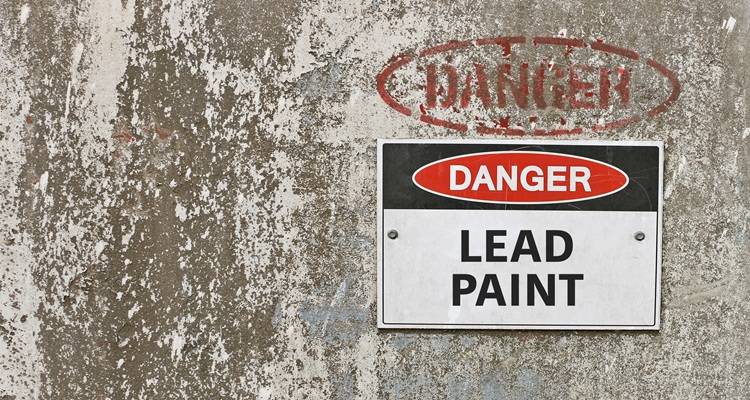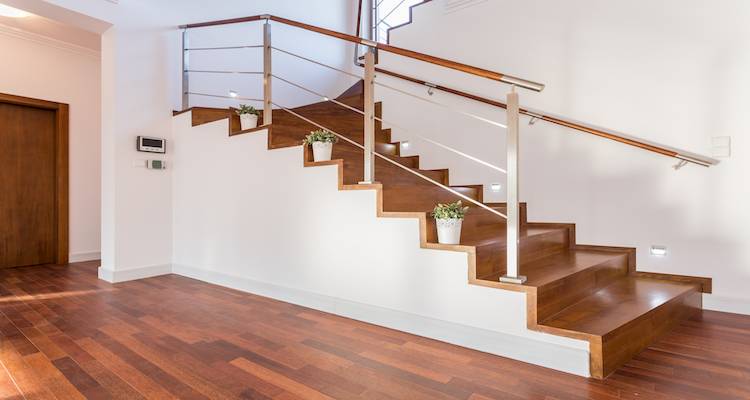How Much Does a Wet Room Cost?
- The average wet room installation cost is around £5,500 in the UK.
- Fitting a wet room will take approximately 4 - 7 days to complete.
- A complete breakdown of how much a wet room costs, including factors that impact prices you're quoted, and additional costs you might need to budget for.
- How long installing a wet room should take, an overview of what's involved, and the benefits of getting a wet room versus keeping a standard bathroom.
- How to find and hire a wet room fitter near you who specialises in this type of work.
Want to know how much a wet room installation costs?
We've created a complete guide covering all wet room bathroom costs. We consider different sizes, finishes, and wet room flooring, so that anyone can calculate a price for a wet room installation and hiring wet room specialists.
Ready for a quote?
We have a range of wet room fitters ready to offer you a free quote!
On average, you can expect to pay between £4,000 – £7,000..
Let's get started below!

£5,500
Table of Contents
- Wet Room Installation Cost
- Supply Only Costs
- Additional Wet Room Costs
- What is the Cost of Installing a Wet Room?
- What Impacts the Cost of a Wet Room?
- What's Involved in Installing a Wet Room?
- Can I Install a Wet Room Myself?
- Benefits of Installing a Wet Room
- Do I Need to Tank a Wet Room?
- Can I Have a Wet Room?
- What Is the Cost of Wet Room Flooring?
- Building Regulations & Planning Permission for a Wet Room Installation
- Removing a Wet Room Cost
- Checklist: Hiring Contractors to Install a Wet Room
- FAQs
- Sources
Wet Room Installation Cost
The cost of a wet room is on average around £4,000 – £7,000.
This depends a lot on the size of the room. Installing a wet room is not an easy job, and there are a lot of different parts to it. From tanking the bathroom to prevent water leaking to tiling and sinking pipes — it is not a typical DIY job.
Wet rooms are fast becoming a desirable feature to have in homes and can even add a considerable amount of value to your home. You should try to keep the design similar to the rest of your home, as it could look out of place.
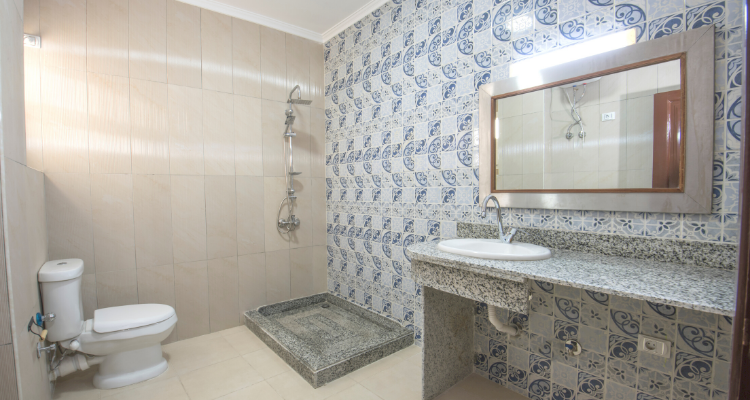
You will need to make sure that the floor has a slight gradient so that the water runs to the drain correctly. If this gradient is not done correctly, you could be left with standing water, and it could cause all sorts of problems in the long run.
This is where a professional contractor comes in best, as they will have experience of ensuring the water trail is correct.
Installing a wet room isn’t something that you can do yourself; you will need to hire a professional. The job will usually take around 4-7 days.
Looking to convert our spare bathroom in our extension to a wet floor bathroom. Is this possible and what would an estimated price be?
Wet Room Prices
Below is a list of the prices that you can expect to pay for the different elements of a wet room installation job.
| Job Description | Cost |
|---|---|
| Tanking shower kit | £130 – £180 |
| Shower tray former | £450 – £550 |
| Shower | £400 – £500 |
| Shower screen | £280 – £320 |
| Tiles | £700 – £850 |
| Tile adhesive | £60 – £80 |
| Grout | £35 – £50 |
| Spacers | £18 – £25 |
| Labour | £1,700 – £2,000 |
Supply Only Costs
Below is a list of all of the supply costs involved with building a wet room. There may be some additional costs if you want to add extra items, such as a toilet to your wet room. We will go over these additional costs in the next section of this guide.
| Job Description | Cost |
|---|---|
| Tanking shower kit | £130 – £180 |
| Shower tray former | £450 – £550 |
| Shower | £400 – £500 |
| Shower screen | £280 – £320 |
| Tiles | £30 – £50 per square metre |
| Tile adhesive | £60 – £80 |
| Grout | £35 – £50 |
| Spacers | £18 – £25 |
Additional Wet Room Costs
There are several additional costs that you may need to consider for a wet room installation. A number of extras can be added to improve a basic wet room.
These additional costs can include:
- Underfloor heating - £300 – £400
- Tiling a shower- £300 – £400
- Toilet installation- £250 – £400
- Bath installation - £500 – £700
What is the Cost of Installing a Wet Room?
Let's take a look at labour costs and timescales.
The average cost for labour when installing a wet room is usually around £1,700 – £2,000. However, several factors can affect the labour costs for this type of job. This can include the location of your property and how many contractors are needed for your job.
Depending on the size and difficulty of the job, you may need more contractors for the work, or the work may take longer. This can result in higher labour costs due to the additional labourers or extra time on the job.
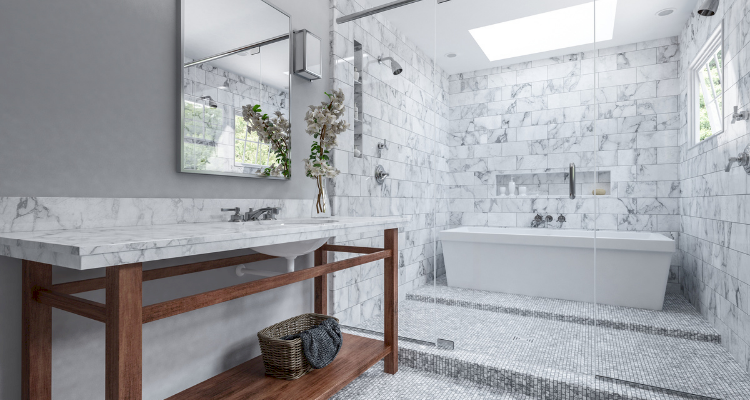
Contractors for this type of job will usually charge around £150 – £200 per day, and the job usually takes an average of approximately 3 – 6 days. You will usually need at least two contractors for this type of job.
The location of your property can also affect the cost that you will pay for the work. Those located in the London area can expect to pay around £30 – £100 more per day for the cost of labour than those located in the North or other parts of the UK.
How much should I be paying for the labour, removing my current bathroom, disposing of it, making good, and installing the new bathroom suite?
What Impacts the Cost of a Wet Room?
Several factors can affect the cost of installing a wet room in your home. Below is a list of some of the main factors that can alter the price you’re going to pay for the job:
Extent of the Job
The more complicated the job is, the longer you can expect it to take. Also, if there is a lot of additional work needed, such as additional pipework, or if you are having intricate furnishings put in, this can also result in the job taking longer. If the job takes longer or is more difficult, then you can expect to pay higher labour costs.
The current ensuite is 8’6” x 4’10” with a tiled shower cubicle, WC, pedestal sink, and a radiator. I’d like to put the rest of the suite back in afterward to save money. How much money should I be putting aside to convert this into a wet room?
Relatively easy job for any wet room specialist and a budget of £1500 to £2000 including materials should be plenty."
Location of Property
The location of your property can affect the cost that you will pay for the work. People who are located in the London area can expect to pay around £30 – £100 more per day for the cost of labour than those located in the North or other parts of the UK.
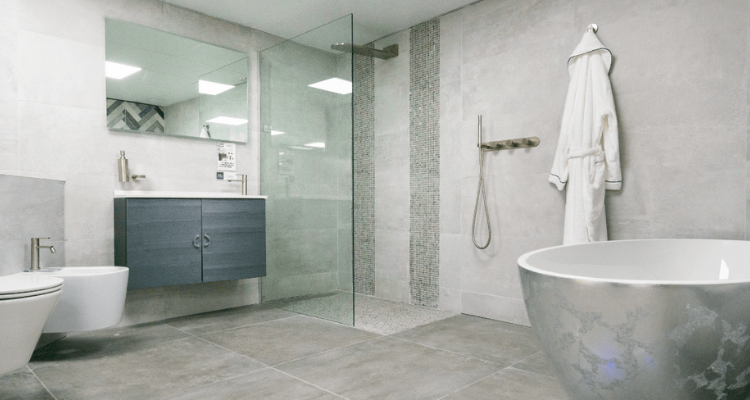
How Many Contractors Are Needed
The installation of a wet room usually requires a minimum of 2 contractors in order to complete the job effectively. For more demanding jobs or larger jobs, you may need more contractors.
Also, if you are having any speciality work done, you may need to hire additional specialists for this work. The average cost for a wet room installer is around £150 – £200 per day. So, you can see how the labour costs can add up if more contractors are involved.
Type and Quality of Furnishings
The type of furnishing that you choose can affect the overall cost of the job. You may choose to have basic furnishings or more luxury furnishings, all of which will differ in price and will affect how much you’re going to pay for the entire job.
I have a reasonably large downstairs toilet that I'd like to turn into a wetroom. The room is approximately 2m x 2.5m. How much would I be looking at cost wise for the conversion?
What's Involved in Installing a Wet Room?
Although every wet room is different, the guide below highlights the steps that need to be taken to install a basic regular wet room in your home:
- Measure out your floor area and then plant out the layout of your new wet room on paper.
- Determine whether any waterproof boards need to be cut. If they do, you should do this now. Cut your boards to size using a hard point saw. Lay out the entire pack of boards across the floor to ensure they’re going to fit. Then carefully remove them and store them somewhere safe until they’re needed.
- Mark out your shower tray position on the floor and also the position of where the drain hole will be.
- Using the nails or screws holding the existing flooring down as a guide, establish where the joists are and then mark the centre line of the first joist outside of the shower area. This is where you will need to remove the floor up to.
- Carefully remove the shower tray and store it somewhere safe for later.
- Set a circular saw to the depth of the floorboards and then use it to cut along the lines that you have marked out. Remove this area of flooring and remove all of the screws and nails.
- Ensure that the remaining sheets and floorboards in the rest of the room are completely secured down and are as level as possible.
- Spread solvent welding adhesive all around the inside of the drain connector and push the shower drain base onto the shower rain connector in a twisting action.
- Spread solvent around the inside of the opposite end of the shower drain connector. Then slide on the waste pipe with a twisting action.
- After the solvent has set, pour some water down the drain to check that it isn’t blocked in any way and to make sure that there aren’t any leaks.
- Any joints that are exposed will now need to have a batten running along the inside of the joist. This is to accommodate the new low-level flooring.
- Cut out some timber batten to the correct length and then screw it at approximately 150mm intervals to the inside of all of the joists at 18mm below the top of these joists.
- Cut out some 18mm plywood and then fit this between the joists on top of the battens.
- Measure out the shower drain base position on this plywood and then mark it and cut it with a jigsaw. This should ensure that the drain base and the connector are exposed though to the new floor.
- Lay the shower tray into the correct position and make sure that it lines up with the shower base. Once you’re happy that it lines up, remove it and store it somewhere safe for later.
- Cover the entire flooring with wood floor primer and leave this to dry for a minimum of 30 minutes.
- Spread adhesive onto the area where the shower tray will go and then place your shower tray into the correct position and push it down into the adhesive. Check that the shower tray is level.
- Put the internal bowl into the shower tray and lock the dome into its position. Then, apply a thin line of silicone around the outer ring of the shower tray and the drain base top. Screw in the drain top to secure it and allow the silicone to dry.
- Spread adhesive onto the floor area and place your first waterproof board into the correct position and push down into the glue. Repeat this step for all of the waterproof flooring boards and leave them to set for a minimum of 3 hours.
- Fit fixing plates along all of the joints at approximately 300mm centres. Place the centre hole on the fixing plates directly over the joints and screw onto the floor.
- Place your waterproof internal corners into their correct position and mark them with a pencil. Apply some sealer to the area, ensuring that you slightly overlap the pencil line. Then, place the internal corner firmly into the adhesive sealant and apply a further layer of sealant over the top.
- Apply a thin layer of sealant between the wall and the edge of the floor and repeat this step for all available walls and floors.
- Apply a thin layer of sealant over all of the fixing plates and board joints.
- Place the shower drain into place upside down and mark around the edge with a pencil. Then, set this aside and mark a line from all four corners of the square to each corner of the shower tray. These lines will act as guidance for tiling.
- Finish the shower tray by tiling it with your choice of tiles and a cement-based tile adhesive. Be sure to use the lines you have drawn as a guide to ensure you keep to the right slope.
- Measure the space from the top of the finished tile to the top of the shower drain and then mark the same distance as previously measured on the shower drain top. Use a hard point saw to cut any excess from the bottom of the shower drain top.
- You can then refit the O ring onto the lowest indent remaining on the shower drain top and ease the drain top into the correct place. Then, fill the gap around the edges of the drain top with the same grout you used for your tiles.
- Place your shower drain finishing grate into place and leave everything to dry for at least 24 hours.
- Your wet room is now ready for the addition of any extra furnishings or decoration that you choose.
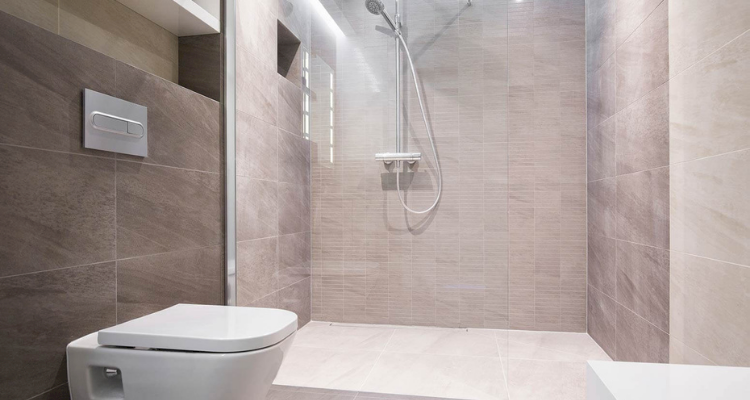
Can I Install a Wet Room Myself?
Whilst DIY may seem like a good way to save some time and money on your wet room installation job; it is not recommended that you attempt to do this job yourself.
It is important to hire a professional plumber to fit and install your products to ensure that they are installed correctly and to avoid the possibility of harmful leaks or blockages that may be caused due to poor installation.
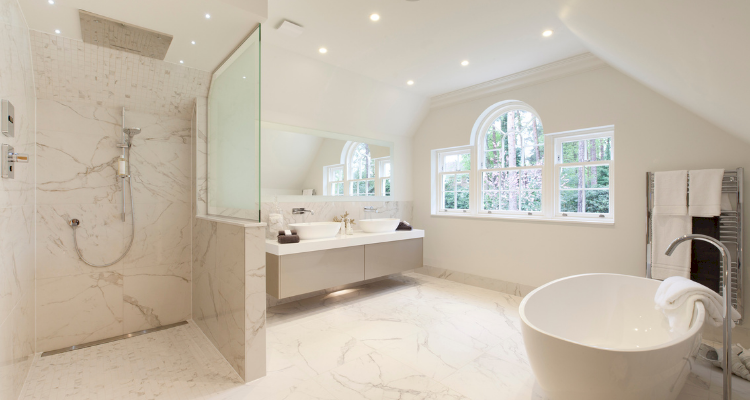
Installing a wet room is not an easy job. It could end up costing you a lot of time and money sourcing all of the things that you need to get the job done. It also takes a very long time to install a wet room, especially if you are doing it alone.
If you hire a qualified professional to carry out the work, they will have all of the tools and materials needed to do a perfect job. They will also have all of the experience and knowledge necessary to install your new wet room to a high standard, and they will also avoid any possible damage that could be caused by attempting the job yourself.
Benefits of Installing a Wet Room
There are several benefits to a wet room. Here is a list of some of the main advantages of installing a wet room in your home:
Adds a Touch of Luxury
The sleek and modern style of a wet room can add a lot of extra luxury to your home. There are many additional features that you can add to your wet room to make it feel even more luxurious such as underfloor heating or luxury décor.
Completely Waterproof
When a wet room is installed correctly, it is entirely waterproof. This provides reassurance that water won’t leak through the walls or floor.
Easy to Clean and Maintain
Wet rooms are deemed easier to clean than a traditional bathroom. This is particularly true when the room has a wall hung toilet and sink. This provides easy access for cleaning the floor.
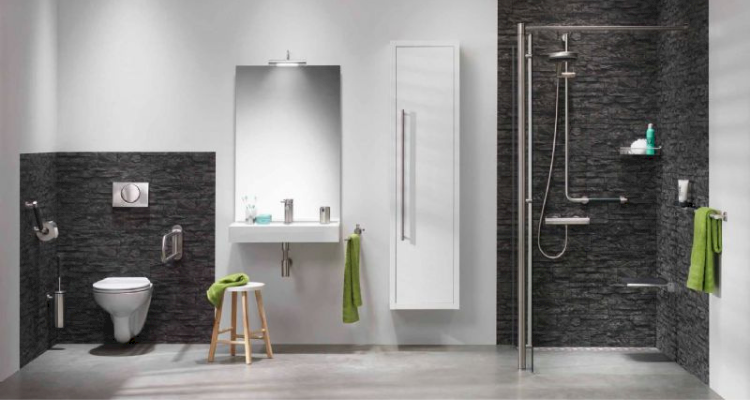
Increase the Value of Your Home
When you add a wet room to your home, it can increase the value of your home. Buyers see a wet room as practical, modern and desirable. For the best results, it is best to install a wet room as a second bathroom or to install a bath in it.
Flexibility in Layout and Design
A wet room allows you to unleash your creativity as you can add many different design and décor elements based on your personal style.
Provides Convenience and Safety
The level access of a shower in a wet room is a safe and practical option. Shower trays are usually designed with non-slip tiles which provide both safety and style.
Do I Need to Tank a Wet Room?
No matter how good your tiling and grouting is, the changes in temperature and humidity can cause fine cracks which can allow water to leak through the walls or floor. This is why a wet room should be tanked.
All tiling in wet areas of the wet room should be fully sealed with a waterproof membrane below them.
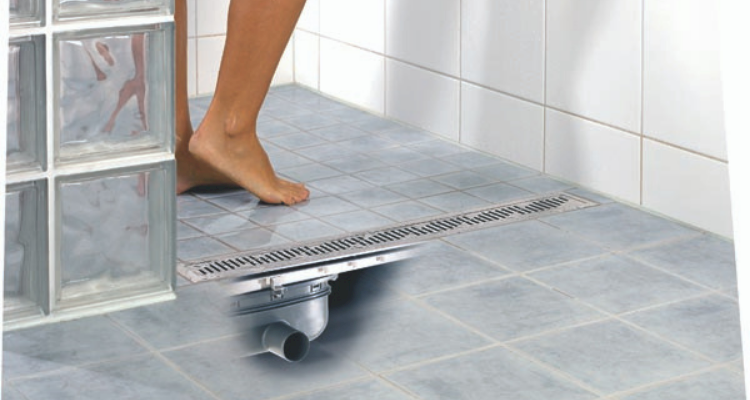
Can I Have a Wet Room?
Provided you have the space for it in your home, you can have a wet room. You can also build an extension for a wet room; however, this may be subject to planning permission and other building regulations rules.
Depending on your type of home, you may be subject to certain building regulation rules that you will need to adhere to in order to have a wet room installed. You can contact your local council or a professional wet room installer to find out whether you will be subject to building regulations.
What Is the Cost of Wet Room Flooring?
There are a number of options for wet room flooring.
What makes a good tile for a wet room?
Below is a list of the different types of wet room flooring and some information on each of the different types:
Tiled Flooring Cost
This is the most common type of flooring for a wet room. There is a vast range of tiles available, so it is easy to find a tile that suits your desired style.
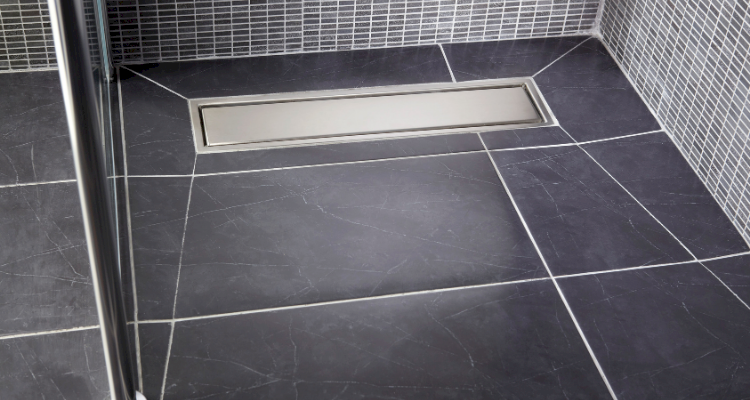
PROS
- ✔ Huge range of styles
- ✔ Durable
- ✔ Budget-friendly
- ✔ Quick and easy to install
CONS
- ✖ Work best with underfloor heating
Vinyl Flooring Cost
Vinyl flooring also offers several different styles. Vinyl flooring can act as a waterproof barrier if installed correctly.
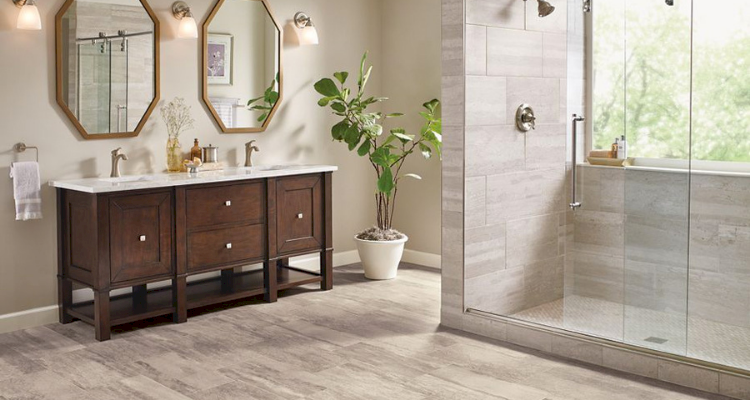
PROS
- ✔ Wide range of styles
- ✔ Budget-friendly
- ✔ Can act as a waterproof barrier
- ✔ Less slippery than tiles
CONS
- ✖ May not be suitable for underfloor heating
Microcement Flooring Cost
Microcement is a composite based on cement. It can create a smooth, seamless floor-ing type; however, it is limited on design styles.
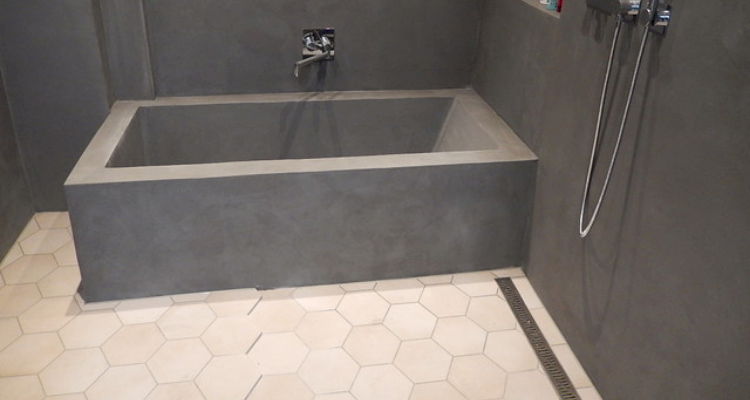
PROS
- ✔ Comes in a number of colours and styles
- ✔ Does not require joints
- ✔ Modern-looking
CONS
- ✖ Not suitable for use in trays or bases
- ✖ Fewer style options available than other flooring types
- ✖ More difficult to install than other options
Building Regulations & Planning Permission for a Wet Room Installation
There is no planning permission needed to install a wet room in your home unless it is being built within a new extension.
Building regulations may apply if you are converting an existing room or working on a new build. The building regulations rules will vary from job to job, so it is best to seek advice before starting the work.
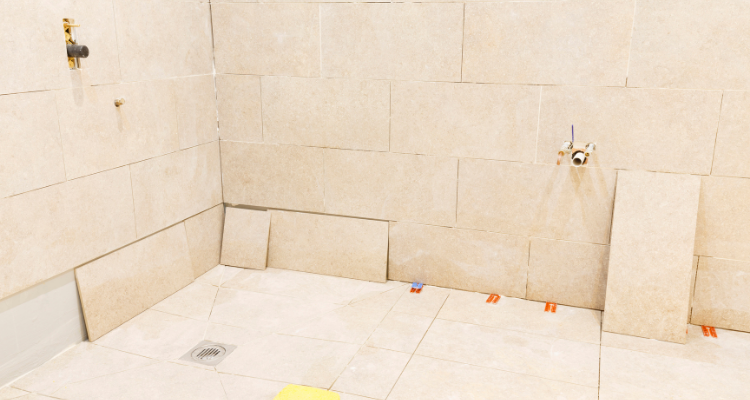
If you are hiring a professional contractor to complete the work, they will be able to create a plan for your new wet room. They will be able to advise and adhere to all of the relevant building regulations rules as needed for your particular project.
Removing a Wet Room Cost
How much does it cost to change a wet room back to a bathroom?
You may want to remove a wet room to install a regular bathroom. If this is the case, it is quite a big job that is likely to cost between £3,000 – £6,000 depending on the size of the room and the type of suite and décor.
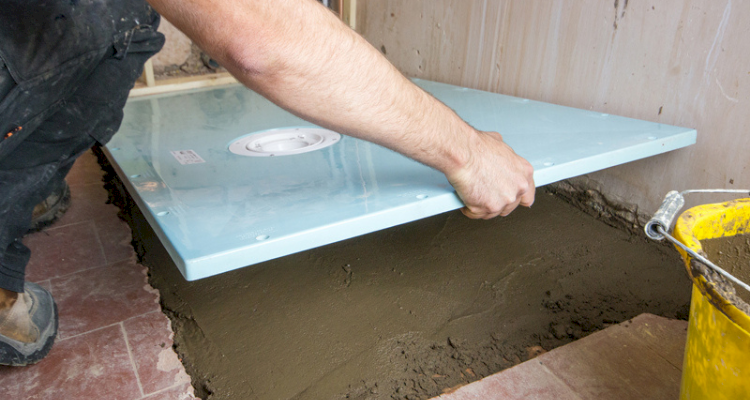
To remove the wet room, you will need to remove the flooring and replace it with new flooring. You will also need to remove the shower and replace this with either a new shower or a bath, or a bath/shower mix.
Removing and replacing a wet room is a challenging job that is likely to take around 7-10 days. You will need to hire a professional company to handle this for you. When getting a quote for this, the contractor will usually include all of the different elements of the job, including the replacement process and waste removal.
Checklist: Hiring Contractors to Install a Wet Room
There are a few things you will need to consider before hiring someone to install a new wet room for you. Below is a list of some of the main things that you should consider when looking for the right contractor for the job:
- Does the contractor offer any guarantees with their work?
- How much is the work to complete? – Ask for a breakdown of costs so you can ensure you are paying a reasonable price for each element of the job
- What type of tiles and fittings does the company offer?
- Do you need to supply any materials yourself, or is it all included in the overall price for the job?
- Is the contractor experienced in fitting the type of wet room elements that you are pur-chasing?
- How many years’ worth of experience does the contractor have in fitting new wet rooms?
- How many contractors will carry out the job?
- Will the contractor fix any issues that may arise?
FAQs
What is a wet room?
What is the best thing to clean a wet room floor with?
How small can a wet room be?
Do you need planning permission for a wet room?
What is the most popular flooring type for a wet room?
Sources
https://www.tilefixdirect.com/help-advice/wet-room-guide/
https://www.wetroominnovations.com/how-to-waterproof-a-wetroom
https://www.ccl-wetrooms.co.uk/technical/wet-room-technical-help-desk/how-to-tank-a-wet-room/
https://wetroommaterials.com/blog/how-to-choose-a-toilet-for-your-wet-room/



